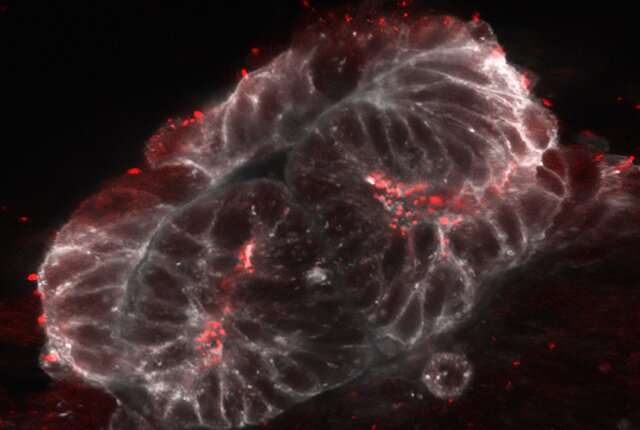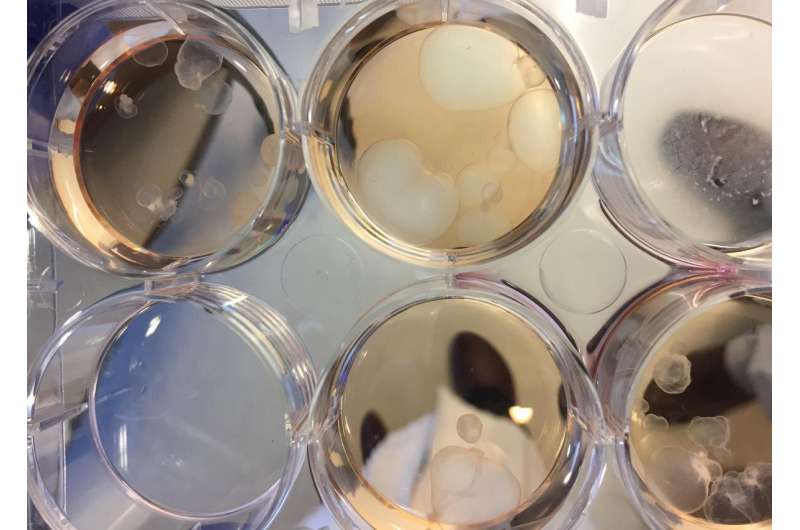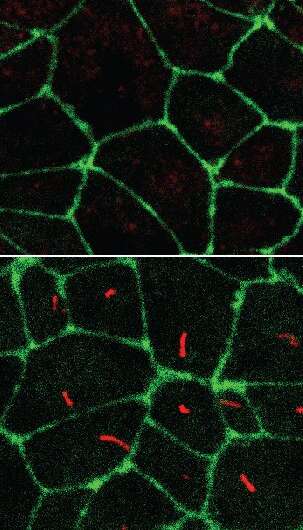Cilia-free stem cells offer new path to study rare diseases

A group of rare diseases called "ciliopathies"—polycystic kidney disease notable among them—emerge from defects in cilia, the tiny hair-like structures on the surface of almost every cell type. But the specific molecular-level disruptions in cilia that trigger these diseases are poorly understood.
In a novel experiment, scientists "knocked out," or deleted, the cilia in a population of otherwise normal human pluripotent stem cells. Subsequently, human tissues and mini-organ structures (organoids) derived from these cilia-free stem cells manifested ciliopathy-like symptoms.
The journal Nature Biomedical Engineering published the findings today.
"We are trying to understand what cilia do, so we ablated them from these cells," said Benjamin Freedman, whose lab led the work. "We wanted to see if the cells would re-create symptoms of ciliopathy without the cilia. Sure enough, when we turned the cells into tissues and organoids (tissue-like structures), they re-created polycystic kidney disease and problems with brain development."
The cilia-knockout stem cells "represent a powerful new tool for understanding this group of diseases, which can be used to guide therapy development," said Freedman, an associate professor of medicine (nephrology) at the University of Washington School of Medicine.
He described cilia as cellular compartments where important proteins are brought together, as if in a Zoom meeting, to make decisions that guide a cell's development. Without the meeting room, these proteins can't talk to each other and cell-development decisions are not made.

There are at least 15 ciliopathies, each rare in terms of population prevalence and each with its own constellation of partially overlapping symptoms. Ciliopathies frequently present at birth; an exception is polycystic kidney disease (PKD), which affects about 1 in 500 people and causes clinical problems mostly later in life.
Because ciliopathies affect many organs, pluripotent stem cells, which can turn into any tissue in the body, could offer a "one-stop shop" to study these diseases.
In removing cilia from human pluripotent stem cells, Freedman and colleagues sought to understand what would happen in their subsequent transformation into tissues and organoids. As it happened, the cilia-free stem cells appeared normal but were unable to fully realize new forms.
"It was surprising to me that, at a certain point after they were turning into tissues, they seemed to break down," Freedman said. "They struggled to transform into anything sophisticated. I think one lesson from this is that the cilia help get cells through their final stage of development."

It was first reported in 2000 that PKD could stem from defects in cilia, but the mechanism of damage that causes cysts to form has escaped scientists. By creating cilia-free stem cells that harbor disease, Freedman said, the researchers now have a framework with which to test and compare molecular actions in the cilia.
"By comparing cells that totally lack cilia to cells that possess cilia but lack PKD genes, as well as to normal cells, we have the whole range of cell types that should enable us to deduce what's going on among the molecules involved. For almost 30 years we've known the genes involved in PKD—even before we knew that cilia were implicated. Hopefully having these distinct cell types will enable us to figure out what specific disruption these genetic molecules are causing to create PKD."
More information: Nelly M. Cruz et al, Modelling ciliopathy phenotypes in human tissues derived from pluripotent stem cells with genetically ablated cilia, Nature Biomedical Engineering (2022). DOI: 10.1038/s41551-022-00880-8
Journal information: Nature Biomedical Engineering
Provided by University of Washington School of Medicine




















